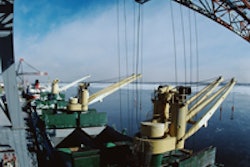Arlington, VA — October 19, 2007 — An unusual and troubling portfolio of risks has emerged to present a daunting challenge to the once bright world economic growth prospects, according to a new quarterly report from the Manufacturers Alliance/MAPI.
In the "MAPI Quarterly Forecast of U.S. Exports, Global Growth and the Dollar: Fourth Quarter 2007 through Fourth Quarter 2008" (ER-638e), economist Cliff Waldman observes that the unsettling length and depth of the housing market downturn in the United States, coupled with a financial shock that was sparked by the problems in sub-prime mortgage lending, are the most notable concerns.
While the world's major central banks mitigated the fallout of a near freeze of the global financial system in August, the tightening of credit attendant to what has effectively been a liquidity crunch remains a primary issue regarding the outlook for an uneven U.S. economy with cascading implications for key U.S. trading partners.
Credit Crisis Spreading
The risks emanating from the difficult set of circumstances in the U.S. economy have weakened the global outlook, MAPI reports. There is evidence that the credit crisis has spread beyond the United States. Furthermore, global sentiment against the dollar is gaining traction, generating challenges for the short-term economic outlooks of major U.S. trading partners.
Finally, a renewed period of rising oil prices, at least partially driven by supply fundamentals, is creating heightened concern for the U.S. economy as well as those of the Eurozone and Japan. The Asian growth juggernaut outside of Japan, however, remains on track, and, somewhat surprisingly, Canadian and Mexican growth remain moderately strong.
"As financial and economic growth risks spread beyond U.S. borders, the near-term prospect for strong global growth has weakened significantly," Waldman said.
U.S. Export Growth Slowdown
The report projects a slowdown in the annual growth of total U.S. goods and services exports, from 8.4 percent during 2006 to 6.8 percent during 2007. As the dollar depreciation takes hold, total U.S. export growth is forecast to accelerate to 9.1 percent during 2008. This is the result of a more competitively priced U.S. dollar overcoming weaker growth in industrialized and developing countries.
Growth in non-U.S. industrialized countries, which include Canada, the Eurozone (plus Denmark, the United Kingdom and Sweden) and Japan, is expected to slow from 2.8 percent on a compound annualized basis during the fourth quarter of 2007 to 2.6 percent during the first quarter of 2008. A modest slowdown is subsequently expected to 2.5 percent during the second quarter of 2008 and 2.4 percent during the second half of the year.
Growth in the developing countries is projected to moderate from 5.2 percent during the second half of 2007 to 4.8 percent during the first half of 2008, with a slight acceleration to 4.9 percent during the last six months.
Dollar in for Further Decline
MAPI predicts that the dollar is in the midst of an extended period of decline. Waldman writes that the dollar will decline by 5 percent against the currencies of industrialized trading partners during the fourth quarter of 2007. Following that, the dollar is expected to fall by 5 percent during the first quarter of 2008 and by 3 percent during the second and third quarters of 2008, but will remain flat in the fourth quarter.
Against the currencies of the developing countries, MAPI forecasts a decline of 3 percent during the fourth quarter of 2007 and then of 6 percent during the first quarter of 2008. A more significant drop of 10 percent is envisioned during the second quarter of 2008, followed by a 5 percent decline during the third quarter and a flat performance during the fourth quarter.
"As the dollar undergoes an extended period of depreciation, trade will be an increasingly positive contributor to U.S. growth," Waldman said. "But, in the short term, the dollar's decline generates inflation risks at home and economic growth risks for the economies of key trading partners."
More information on the MAPI report is available on the Alliance's Web site.
In the "MAPI Quarterly Forecast of U.S. Exports, Global Growth and the Dollar: Fourth Quarter 2007 through Fourth Quarter 2008" (ER-638e), economist Cliff Waldman observes that the unsettling length and depth of the housing market downturn in the United States, coupled with a financial shock that was sparked by the problems in sub-prime mortgage lending, are the most notable concerns.
While the world's major central banks mitigated the fallout of a near freeze of the global financial system in August, the tightening of credit attendant to what has effectively been a liquidity crunch remains a primary issue regarding the outlook for an uneven U.S. economy with cascading implications for key U.S. trading partners.
Credit Crisis Spreading
The risks emanating from the difficult set of circumstances in the U.S. economy have weakened the global outlook, MAPI reports. There is evidence that the credit crisis has spread beyond the United States. Furthermore, global sentiment against the dollar is gaining traction, generating challenges for the short-term economic outlooks of major U.S. trading partners.
Finally, a renewed period of rising oil prices, at least partially driven by supply fundamentals, is creating heightened concern for the U.S. economy as well as those of the Eurozone and Japan. The Asian growth juggernaut outside of Japan, however, remains on track, and, somewhat surprisingly, Canadian and Mexican growth remain moderately strong.
"As financial and economic growth risks spread beyond U.S. borders, the near-term prospect for strong global growth has weakened significantly," Waldman said.
U.S. Export Growth Slowdown
The report projects a slowdown in the annual growth of total U.S. goods and services exports, from 8.4 percent during 2006 to 6.8 percent during 2007. As the dollar depreciation takes hold, total U.S. export growth is forecast to accelerate to 9.1 percent during 2008. This is the result of a more competitively priced U.S. dollar overcoming weaker growth in industrialized and developing countries.
Growth in non-U.S. industrialized countries, which include Canada, the Eurozone (plus Denmark, the United Kingdom and Sweden) and Japan, is expected to slow from 2.8 percent on a compound annualized basis during the fourth quarter of 2007 to 2.6 percent during the first quarter of 2008. A modest slowdown is subsequently expected to 2.5 percent during the second quarter of 2008 and 2.4 percent during the second half of the year.
Growth in the developing countries is projected to moderate from 5.2 percent during the second half of 2007 to 4.8 percent during the first half of 2008, with a slight acceleration to 4.9 percent during the last six months.
Dollar in for Further Decline
MAPI predicts that the dollar is in the midst of an extended period of decline. Waldman writes that the dollar will decline by 5 percent against the currencies of industrialized trading partners during the fourth quarter of 2007. Following that, the dollar is expected to fall by 5 percent during the first quarter of 2008 and by 3 percent during the second and third quarters of 2008, but will remain flat in the fourth quarter.
Against the currencies of the developing countries, MAPI forecasts a decline of 3 percent during the fourth quarter of 2007 and then of 6 percent during the first quarter of 2008. A more significant drop of 10 percent is envisioned during the second quarter of 2008, followed by a 5 percent decline during the third quarter and a flat performance during the fourth quarter.
"As the dollar undergoes an extended period of depreciation, trade will be an increasingly positive contributor to U.S. growth," Waldman said. "But, in the short term, the dollar's decline generates inflation risks at home and economic growth risks for the economies of key trading partners."
More information on the MAPI report is available on the Alliance's Web site.













